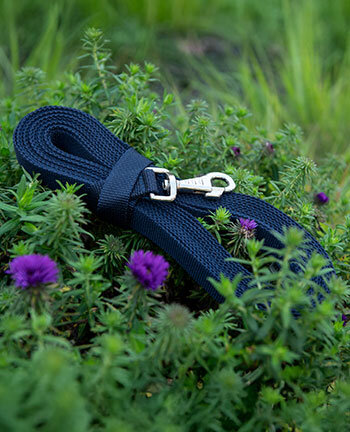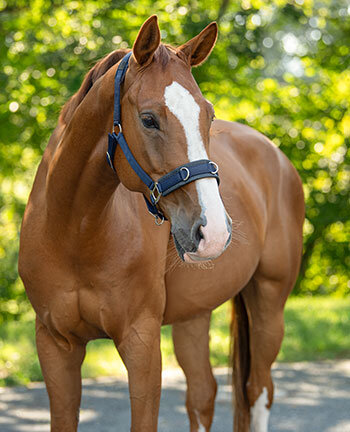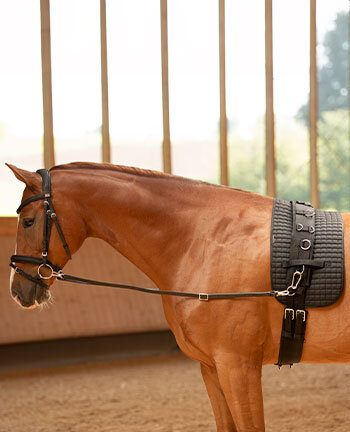- Frequently asked questions
- What equipment is needed for lungeing?
- What is needed for lungeing?
Lungeing
- Frequently asked questions
- What equipment is needed for lungeing?
- What is needed for lungeing?
What equipment is needed for lungeing?
To lunge your horse, you will need the following equipment:
For your own safety and health, gloves are recommended when lungeing. It can always happen that your horse bolts or breaks free. The lunge rein will then rush through your hands and can burn them. Sturdy yard boots are also recommended for lungeing.What is needed for lungeing?
Lungeing is much more than a way of exercising the horse. Correctly applied, lungeing can be a valuable part of horse training. Young horses can be trained in this way, introduced to working with humans and build up muscles effectively. But experienced horses that have already been ridden also benefit from lungeing, as it adds variety to their daily training routine. And finally, lungeing can support rehabilitation.
It doesn't matter what the purpose of lungeing is - a lunge rein and a cavesson are part of the basic lungeing equipment. Some horse owners and trainers use a bridle instead of a cavesson. In this case, the lunge rein is only hooked onto the inner bit ring so that a flexion and bend is possible. It is very common to thread the lunge rein through the inner bit ring and buckle it into the outer bit ring. However, the bit rings are pulled together and press uncomfortably against the corners of the mouth and the lower jaw. Alternatively, you can use a lunge coupling. With these, however, flexion and bend is hardly or not at all possible.
A lunge whip is used for the driving aids or as a substitute for leg aids. It should be easy to hold and should not tire your arm so that you can continue to give precise aids.
Ideally, your horse can be lunged without auxiliary reins and it will stretch forward-downward on its own and round its back. However, lungeing with a cavesson does not always lead to a well-rounded horse. Now and then a correction is needed, which can then be achieved by means of auxiliary reins. Their use should only be considered by experienced trainers and should not be considered for permanent use, as the horse should ultimately learn to move in a sound posture by itself. For lungeing, side reins and lauffer reins are most commonly used, whereby lauffer reins can be used in a variety of ways and also as a running side rein. For this purpose, you can buy side reins and lauffer reins made of nylon or leather in our online shop. Lungeing aids made of soft polyester material round off our range of auxiliary reins.
As soon as auxiliary reins are used for lungeing, a lunge roller and a lunge roller pad are needed to attach them to.
For more detailed information on what equipment you need for lungeing and how you can use it, see our guide on lungeing.








